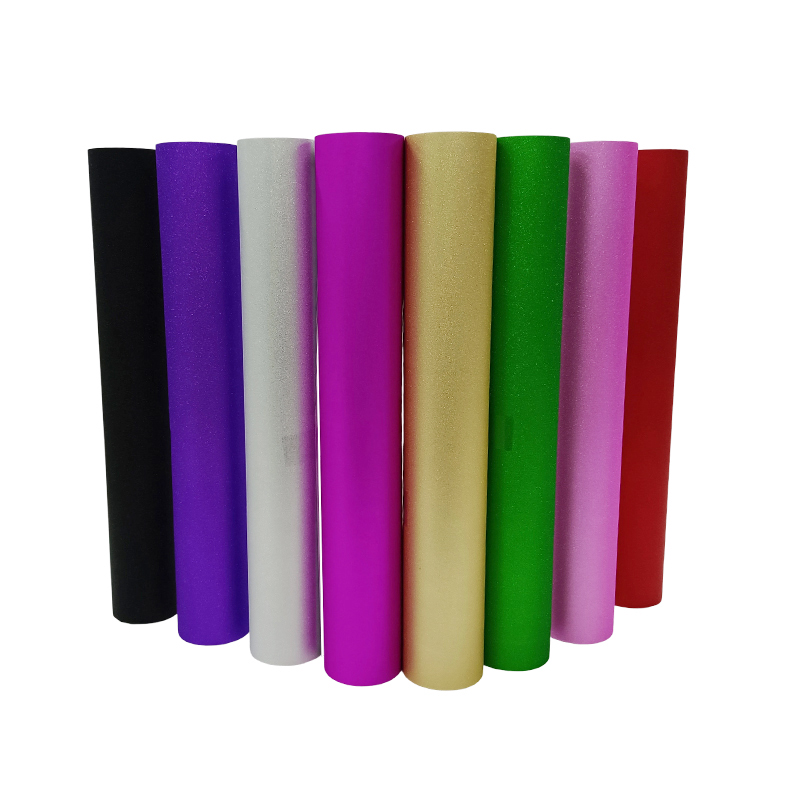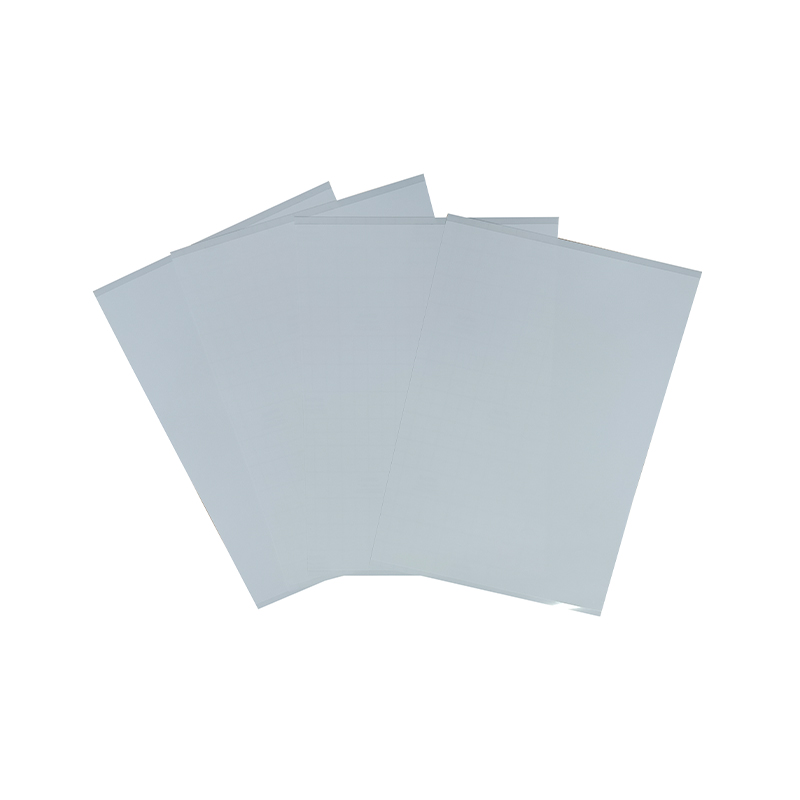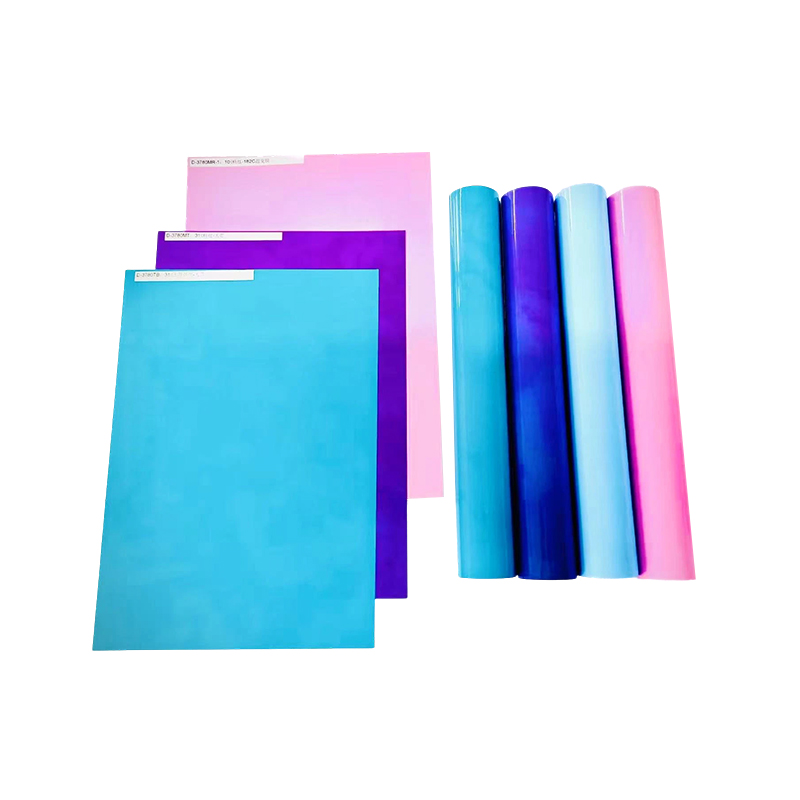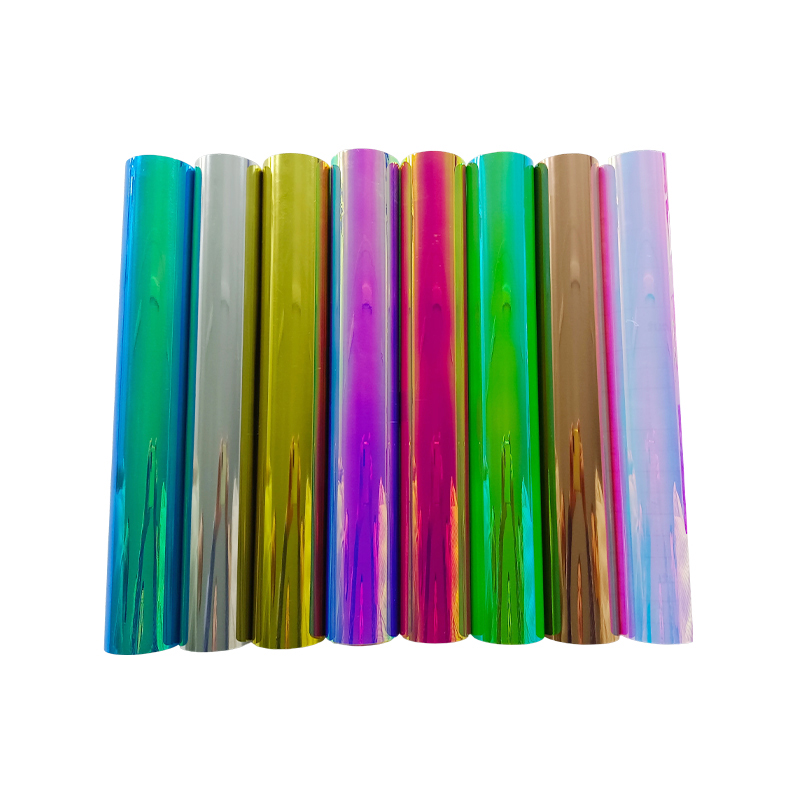How to achieve a balanced design between light transmittance and color contrast in color change vinyl temperature change film?
Release Time : 2025-10-14
Balancing transmittance and color contrast in color-change vinyl temperature-change film requires coordinated breakthroughs in four dimensions: material selection, structural optimization, process control, and environmental adaptability, to achieve a dynamic balance between light transmission and color rendering.
Material selection is the core foundation for balancing transmittance and color contrast. The transparency of the vinyl substrate directly affects initial transmittance, while the molecular structure of the temperature-change dye determines color change sensitivity and contrast. For example, copolymerizing high-purity polyvinyl alcohol (PVA) with vinyl monomers improves the substrate's optical uniformity and reduces light scattering. Furthermore, choosing spiropyran or azobenzene dyes with steep color change curves allows for rapid temperature-triggered transitions from colorless to colored, avoiding intermediate grayscale transitions and improving contrast. Material compatibility is also crucial; ensuring no interaction between the dye and substrate prevents transmittance degradation due to phase separation.
Structural optimization requires a multi-layer composite design to achieve functional synergy. A typical color-change vinyl temperature-change film structure includes a transparent base layer, a temperature-change functional layer, and a protective coating. The base layer requires high light transmittance and low haze, and can be made of biaxially oriented polypropylene (BOPP) or polyethylene terephthalate (PET). The temperature-sensitive functional layer uses microencapsulation technology to isolate the dye from the nucleating agent to prevent aggregation. A gradient concentration distribution design improves surface temperature uniformity and reduces localized color change delays. The protective coating uses abrasion-resistant silicone or fluorocarbon resin to maintain light transmittance while preventing scratches and damage to the functional layer.
Process control directly impacts the microstructure and performance stability of the film. During the coating process, the dispersed particle size of the temperature-sensitive dye must be precisely controlled to avoid light scattering caused by overly large particles. For example, a sand mill can be used to refine the dye particles to the nanometer level, and online particle size monitoring can be used in real time. The temperature and pressure parameters of the hot pressing process must be matched to the glass transition temperature of the substrate to prevent excessive hot pressing from reducing the substrate's crystallinity and, in turn, light transmittance. During the curing process, the UV light intensity and exposure time must be optimized to ensure complete chemical bonding between the dye and the substrate, avoiding degradation of color change performance due to insufficient curing.
Environmental adaptability is a key extension of balancing transmittance and contrast. Color change vinyl temperature change film must maintain stable performance over a wide temperature range of -20°C to 80°C. At low temperatures, dye molecular motion is hindered, prolonging the color change response time. In this case, adding a plasticizer can lower the substrate's glass transition temperature and enhance molecular segment mobility. At high temperatures, the risk of thermal decomposition of the dye increases, necessitating the use of a combination of antioxidants and UV absorbers to inhibit thermal oxidative degradation. In hot and humid environments, moisture absorption by the film can lead to a decrease in transmittance. Depositing hydrophobic silica nanoparticles on the substrate surface can create a lotus leaf-like surface structure to reduce water droplet adhesion.
Dynamic spectral control technology offers a new approach to achieving this balanced design. Active regulation of transmittance can be achieved through the coupling of electrothermal generation and thermally induced phase change. For example, a transparent conductive oxide (such as ITO) and a temperature-sensitive hydrogel are embedded within the film. When a voltage is applied, the hydrogel undergoes a phase transition due to Joule heating, switching from a transparent state to a light-blocking state. Transmittance can be reversibly switched between 80% and 20%. This active control mode can overcome the performance limitations of passive color-change vinyl temperature-change film at extreme temperatures, achieving a customized balance between transmittance and contrast.
Long-term stability design requires attention to the film's weather resistance and fatigue resistance. Ultraviolet radiation can cause dye photolysis, resulting in a decrease in color contrast. This can be achieved by depositing a nano-titanium dioxide photocatalytic layer on the film surface to decompose organic pollutants while reflecting UV light. Cyclic temperature fluctuations can induce thermal stress in the film, leading to cracking or delamination. This requires a sandwich-like structure, inserting an elastic buffer layer between the substrate and the functional layer to absorb thermal expansion stress.
In practical applications, the balance between transmittance and color contrast depends on the specific application requirements. For example, color-change vinyl temperature-change film for car sunroofs must maintain a visible light transmittance of ≥70% while achieving a near-infrared reflectivity exceeding 50% to balance the needs of daylighting and thermal insulation. Color-change vinyl temperature-change film for architectural glass must automatically switch to a light-blocking state at high temperatures to reduce air conditioning energy consumption while maintaining natural light levels indoors. Through the coordinated optimization of materials, structures, and processes, color-change vinyl temperature-change film has evolved from a single function to an intelligent and multifunctional one, providing innovative solutions for green, energy-saving buildings and intelligent optoelectronic devices.







